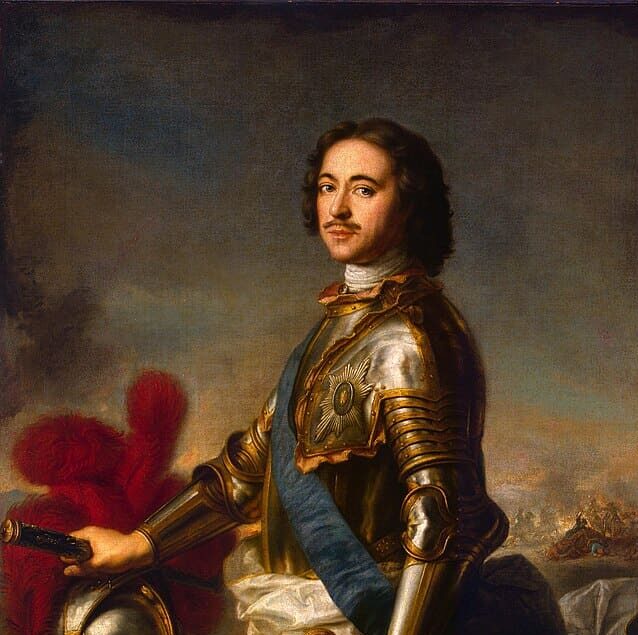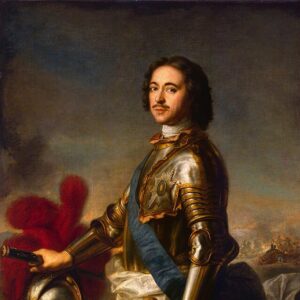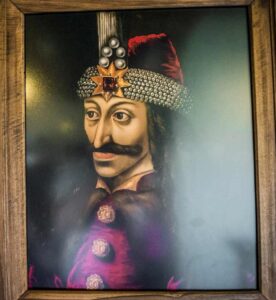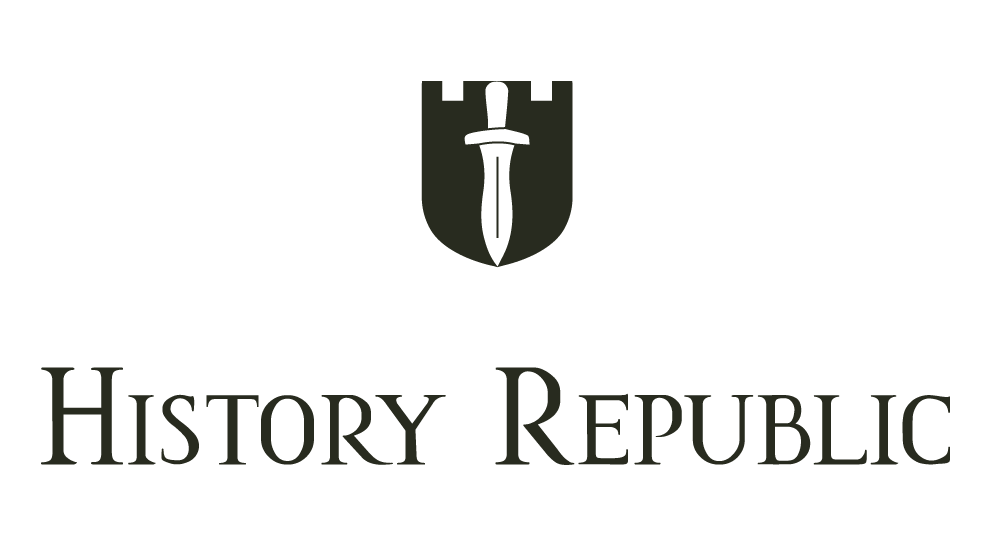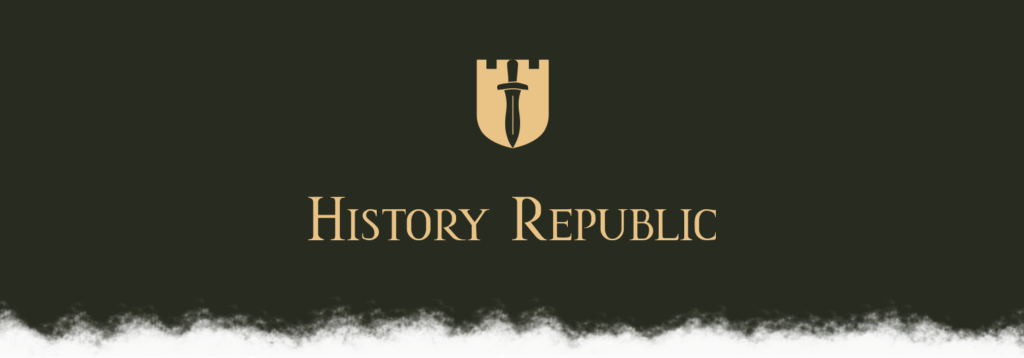On a cold January morning in 1725, a giant of a man lay dying in St. Petersburg—the city he’d carved out of swamps as a personal argument with the past. This was Peter Alexeyevich Romanov, known to history as Peter the Great: shipbuilder and autocrat, soldier and reformer, deeply curious and casually ruthless.
By the time he took his last breath, Russia was almost unrecognizable from the semi-medieval, landlocked state he’d inherited. It had a navy, a European-style army, new schools, a new capital, new taxes, new clothes, new fears—and a new sense of itself.
But Peter’s story is not just a checklist of reforms; it’s the story of a restless man who could not sit still inside the country he was born to rule, and who decided, with typical lack of moderation, to rebuild it from the keel up.
Early Days of Peter The Great
When Peter was born in 1672, Russia was big, conservative, and stuck. The tsardom stretched across forests and steppe but had little direct access to the sea.
The boyars (nobility) guarded their privileges, the Orthodox Church guarded tradition, and Moscow—with its onion domes and smoky wooden suburbs—felt closer to the Middle Ages than to Louis XIV’s Versailles or the new commercial ports of Western Europe.
Foreigners could see the potential: a huge population, massive resources, and a strategic position between Europe and Asia. But Russia’s army was outdated, its bureaucracy clumsy, and its horizons narrow.
Western technology, science, navigation, finance—the tools that were making maritime empires and gunpowder states elsewhere—trickled in slowly and met resistance at every turn.
Peter grew up half inside, half outside this world.
A chaotic childhood and an unlikely education
Peter’s early life was marked by palace chaos. His father, Tsar Alexei, died when Peter was a child. A struggle between powerful factions followed.
In 1682, the Streltsy—the elite musketeer corps—erupted in a violent revolt, dragging enemies from the Kremlin and murdering them in front of the royal family.
Young Peter watched some of this horror firsthand. The experience left scars: a lifelong hatred of the Streltsy and a deep suspicion of conservative elites.
While older relatives and the formidable regent Sophia held real power, Peter spent much of his youth away from the formal court, in the village of Preobrazhenskoye near Moscow. There, something unusual happened: instead of drifting into idle princely comfort, he played at armies and navies with terrifying seriousness.
He built “toy regiments” that evolved into real elite guards units. He experimented with artillery. He met foreign officers, shipwrights, and artisans living in the German Quarter of Moscow—Russians called most Westerners “Nemtsy,” mute ones, for their strange languages—where he was introduced to European weapons, ship models, maps, and ideas.
It was a parallel education: traditional Orthodox Russia on one side, loud, practical Western know-how on the other. Peter found his curiosity pulled inexorably toward the latter.
The Grand Embassy: a tsar goes wandering
In 1689, after maneuvering against Sophia with the help of his loyal regiments, Peter became de facto ruler (officially co-tsar, then sole ruler from 1696). And then, in a move that says everything about him, he left.
In 1697–1698, Peter embarked on the “Grand Embassy,” a lengthy trip through Europe—Netherlands, England, the Holy Roman Empire—traveling partly incognito as “Peter Mikhailov.” That disguise fooled no one (he was over two meters tall and radiated authority), but the intention mattered: he wanted to learn, not just to be flattered.
He toured shipyards in Amsterdam and Deptford, studied navigation, anatomy, fortification, and city planning. He recruited experts—sailors, engineers, gunners, doctors—to come to Russia.
Europe, for its part, was not especially eager to join his dream of a grand anti-Ottoman crusade. But Peter came home with something more important: conviction. Russia would be dragged, pushed, ordered, hammered into a modern power, whether it liked it or not.
Breaking old Russia to build a new one
Peter’s reforms came in waves, often messy and brutal, always aimed at one thing: strengthening the state.
He reorganized the army along Western lines: standardized uniforms, new drills, artillery, engineering units, foreign instructors. He built a navy from almost nothing—first on the Sea of Azov to strike at the Ottomans, then in the Baltic against Sweden.
He attacked the symbols of old Muscovy:
- Beards & dress: He ordered nobles and officials to shave their beards and adopt Western-style clothing at court. Men who insisted on keeping beards had to pay a special tax—Peter even minted “beard tokens” as receipts. This was more than a fashion whim; it was a signal that the old ways no longer ruled.
- Church power: He abolished the Patriarchate (head of the Russian Orthodox Church) after the last patriarch died, replacing it with a Holy Synod under state control. The church was folded more tightly into the machinery of the state, its independent political role curbed.
- Administration: He introduced collegia (ministries) to replace archaic offices, created a Governing Senate, and in 1722 established the Table of Ranks, which made rank and privilege depend (in theory) on service to the state, not just noble birth. That principle—merit, or at least service, over lineage—would reshape Russian elites for generations.
- Calendar & script: He changed New Year’s Day to January 1 and shifted the official year-numbering to the Christian era, nudging Russia’s clock closer to Europe’s. He simplified the Cyrillic script into the “civil script” used for secular printing, clearing the way for modern publishing.
He also introduced new schools for navigation, engineering, medicine; pushed young nobles to study abroad; encouraged factories and mining; expanded state control over labor and taxes.
None of this was gentle. Peasants bore heavier burdens; conscription was harsh; reforms were enforced with executions, floggings, exiles. Peter believed the state’s goals justified extreme means, and he lived that belief.
Peter’s Wars and the Making of an Empire
Peter did not modernize Russia in a vacuum. He hammered it into shape in the forge of war. Every major conflict he launched—or stumbled into—fed back into his reforms, and together they redrew the map in Russia’s favor. If his reign begins with a sprawling but landlocked empire looking inward, it ends with a state whose borders, ports, and ambitions all point out to sea.
Azov: the rehearsal for a sea power (1695–1696)
Peter’s first big test came against the Ottoman Empire.
In 1695, he marched on the fortress of Azov at the mouth of the Don River, hoping to pry open a route to the Black Sea. The campaign was clumsy. Siege operations were poorly coordinated, and, crucially, Russia had almost no navy. The Ottomans held. Peter withdrew—annoyed, but not defeated.
Then he did what set him apart from most rulers of his age: he treated failure like homework.
Over the winter he ordered ships built on the Don, brought in foreign specialists, and drilled his troops in proper siege warfare. In 1696, the Russians came back with artillery, engineers, and a small fleet blocking Ottoman resupply. Azov fell.
For a brief moment, Russia had:
- A foothold on the Sea of Azov
- New fortifications at Taganrog
- A taste of what it meant to fight as a maritime power
Though Peter later had to surrender Azov after the disastrous Pruth campaign (1711), the lesson stuck. Modern war, for him, meant fleets, engineers, logistics—disciplined power, not just pious banners and bravado. Azov was the rehearsal for the empire to come.
The Great Northern War: breaking Sweden, opening the Baltic (1700–1721)
The real transformation came with the Great Northern War, a 21-year struggle against Charles XII’s Sweden for control of the Baltic.
Peter went in overconfident and was slapped down immediately. At Narva (1700), in a snowstorm, a smaller Swedish army shattered Peter’s larger, disorganized forces. Many rulers would have sued for peace or found scapegoats. Peter rebuilt instead.
He:
- Reformed command structures
- Standardized weapons and uniforms
- Expanded ironworks and armories
- Hired foreign officers, drilled relentlessly
- Started constructing a Baltic fleet
While Charles XII chased campaigns in Poland and Saxony, Peter quietly ate away at Sweden’s eastern flank. Russian forces captured Noteborg and Nyenschantz, then secured Ingria—the wedge of land at the mouth of the Neva. In 1703, on that soggy, windswept ground, Peter founded Saint Petersburg, a new capital facing Europe instead of turning its back to it.
The decisive moment came in 1709 at Poltava. Charles XII, deep in Ukraine and short on supplies, met Peter’s rebuilt army. This time, it was the Swedes who were overmatched. The Russian victory wrecked Swedish great-power status and announced, unmistakably, that a new player had arrived.
The war dragged on, but the end was a formality. By the Treaty of Nystad (1721), Russia gained:
- Estonia
- Livonia
- Ingria
- Parts of Karelia, including Vyborg
This was not just land; it was a permanent Baltic window:
- Deep-water ports for its new navy
- Direct routes into European trade and diplomacy
- Strategic depth against northern rivals
Peter’s imperial title—Emperor of All Russia—wasn’t empty vanity. It reflected a hard-won reality: Russia had muscled into the circle of European great powers.
The Persian venture: a final reach to the Caspian (1722–1723)
Late in his reign, Peter turned southeast, eyeing the crumbling Safavid Empire in Persia. He feared the Ottomans or other rivals might grab key coastal points on the Caspian Sea and cut into Russia’s trade routes.
In 1722–1723, he launched a campaign along the western Caspian shore, supported by a flotilla. Russian forces occupied:
- Derbent
- Baku
- Several surrounding coastal provinces
The Treaty of Saint Petersburg (1723) confirmed these gains. On paper, it looked like another triumph: Russia now touched the Caspian from the north and west, hinting at a future role in the Caucasus and Iranian world.
In practice, the conquest was:
- Costly to maintain
- Vulnerable to disease and supply troubles
- Dependent on Peter’s personal drive
After his death, much of this territory was bargained away in later treaties. Still, the campaign revealed an important shift: Peter’s Russia no longer thought of itself as bounded by forests and steppe. It thought in terms of seas, straits, and strategic coastlines.
War as Peter’s engine of transformation
Across all these campaigns, a pattern emerges:
- War forced reform: defeats exposed weaknesses; victories validated new methods.
- Territorial gains—especially in the Baltic—were welded to his domestic overhauls in army, navy, taxation, and administration.
- Expansion wasn’t random conquest; it targeted gateways:
- Azov and the Black Sea (even if temporary),
- The Baltic and Northern Europe,
- The Caspian and the Caucasus.
By the end of Peter’s reign, Russia was bigger on the map, yes—but more importantly, it was structurally different. It had:
- A standing army that looked and fought like those of Europe
- A navy that could project power beyond river mouths
- A new capital plugged into Baltic trade and Western influence
- An imperial mindset that assumed Russia should sit at every important table
Peter’s wars did more than add provinces; they rewired how Russia understood power itself and he celebrated by taking a new title: not just Tsar, but Emperor of All Russia.
Saint Petersburg: a city as a manifesto
Moscow was ancient, Orthodox, and traditional. Peter wanted something else: a capital that looked outward. He chose a windswept, flood-prone delta on the River Neva, close to the Baltic, dangerously exposed—but symbolically perfect. There, he ordered canals, shipyards, palaces, straight avenues, Western façades.
Peter wanted something else: a city that forced Russia to look toward Europe, to ships and trade and salt air. He found his canvas in one of the worst possible places.
Why there?
In 1702–1703, during the Great Northern War, Russian forces seized key Swedish fortresses along the eastern Baltic—Noteborg (Oreshek) on Lake Ladoga and Nyenschantz at the mouth of the Neva. Controlling the Neva meant controlling a direct water route from the interior to the Baltic Sea.
The delta itself was a mess:
- Marshland and shifting channels
- Flood-prone, foggy, mosquito-ridden
- Exposed to Baltic winds and enemy fleets
Strategically, though, it was perfect. A fortress there would guard the Neva. A port there would tap Baltic trade. A capital there would send a message: Russia now lives on the sea. Peter chose symbolism over comfort without hesitation.
On May 16 (27), 1703, he laid the foundation of the Peter and Paul Fortress on Zayachy Island—often taken as the birthday of Saint Petersburg.
A European city by decree
From the start, Peter knew what he didn’t want: another medieval, enclosed Moscow. So he imposed rules that made Saint Petersburg an architectural manifesto.
- Stone, not wood: In a country of log houses, Peter ordered stone construction and even temporarily banned stone building elsewhere so that masons and materials would flow to his new city.
- Straight lines, not winding streets: He wanted broad embankments, long avenues, rivers treated like canals—think Amsterdam on the Neva rather than Moscow’s organic sprawl.
- Façades for Europe: Foreign architects—Italian, Swiss, German, later Russian—were drawn in to design palaces, churches, and government buildings with a European profile: baroque details, symmetry, light.
This wasn’t just taste. It was politics in brick and plaster. Anyone visiting would see, before meeting a single official, that Russia was speaking a new visual language.
Built on command—and on backs
Saint Petersburg wasn’t a city that grew; it was a city that was ordered into existence.
Peter used:
- Pressed peasant labor from across the empire
- Soldiers, prisoners, conscripted artisans
- Centralized supply chains of stone, timber, food
Workers died in droves from exposure, disease, accidents, and exhaustion. Later critics called it a city “built on bones”—not entirely metaphorical. But Peter accepted human cost as the price of speed. For him, delay was more dangerous than suffering: Russia, he believed, had to close its gap with Europe now, not in a comfortable century.
Dragging the elite to the edge of the map
A capital is not just buildings; it’s people who are forced to act as if it matters.
Peter:
- Ordered the Senate, key colleges (ministries), and court to relocate from Moscow.
- Forced nobles to build houses in Saint Petersburg if they wished to remain in favor.
- Required state servants and officers to spend time there, entangling their careers with the new city.
- Staged parades, receptions, naval reviews, and diplomatic events on the Neva—making it the stage on which power performed itself.
Relocation wasn’t popular. The climate was harsh, infrastructure primitive, and Moscow’s conservative circles resented the shift. But that was partly the point: Peter wanted to break the comfort of the old boyar class and root them in his “window to Europe,” where their daily life—foreign envoys, foreign ships, foreign fashions—would normalize his reforms.
The Baltic window in practice
By the end of Peter’s reign, Saint Petersburg was:
- A working seaport, hosting Russia’s Baltic Fleet and commercial shipping.
- A bureaucratic center, with Western-style “colleges” managing war, navy, foreign affairs, commerce.
- A cultural filter, where young nobles learned European languages, sciences, and etiquette.
It changed how Russia thought geographically:
- Instead of seeing Europe as a distant, overland world beyond Poland and Sweden, the empire now had a direct maritime route into the North Sea and beyond.
- Ideas, books, artisans, and technologies could move faster.
- Russian diplomacy, trade, and war planning increasingly started from this Baltic perspective.
If Moscow remained the spiritual and historical heart, Saint Petersburg was the nervous system of the new state Peter was building.
A city that outlived the man
Peter died in 1725, but his city did exactly what he designed it to do.
For two centuries:
- Emperors were crowned expecting to rule from the Neva.
- Major reforms, conspiracies, revolutions, and artistic movements radiated from Saint Petersburg.
- Foreigners arriving by sea met Russia not as a shadowed, medieval curiosity, but as a European-facing empire with stone quays, academies, and fleets.
In your article, you can frame Saint Petersburg as Peter’s manifesto in stone:
He didn’t just tell Russia to face the West; he moved its throne onto a swamp where it had no choice.
It’s the purest example of his method—taking a brutally simple idea (“we must be a European sea power”), turning it into geography, and using the full weight of the state to make everyone live inside that decision.
Power, control, and the cost of greatness
Peter’s energy was volcanic, but so was his violence. He demanded efficiency and loyalty, and when he met resistance, he smashed it.
- In 1698, while he was still in Europe, the Streltsy—those same musketeers who had terrified his childhood—rose again. Peter rushed home, personally interrogated and tortured conspirators, and had hundreds executed. Some were left hanging as grisly warnings.
- He cracked down on regional revolts on the Volga and among steppe peoples; he was willing to use exemplary brutality when he felt state authority was at stake.
Even his family was not spared. His son and heir, Alexei, hated the new order and longed for the old Muscovite ways. Suspicious that Alexei might become the rallying point for anti-reform forces, Peter had him arrested, interrogated (under torture), and ultimately condemned for treason.
Alexei died in 1718, likely from injuries. The message was stark: no one—not even blood—could stand between Peter and his vision for Russia.
This is the paradox of Peter the Great: the man who introduced “modernization,” “rational administration,” and “Western science” also strengthened autocracy, serfdom, and the state’s right to reach brutally into private lives.
Peter The Great The man himself
Behind the laws and battles was a very human, very intense figure. Peter hated idleness. He worked in shipyards with his own hands, practiced surgery and dentistry on unlucky souls, collected curiosities, dissected animals, studied navigation, sketched buildings. He swore, laughed loudly, drank heavily, loved rough jokes, sudden rages, and practical problems.
He could be charismatic, even charming; foreign visitors often found him impressive in person. But he was also inconsistent and frightening—a ruler for whom affection and terror were not mutually exclusive tools.
He saw himself as a servant of the state—its chief servant, but servant nonetheless—and he expected everyone else to see their lives that way too.
Final years and Death
By the 1720s, Peter was aging but still in motion. He continued to tinker with administration, foreign policy, and industry. In 1722–23 he launched the Persian Campaign, seizing territories along the Caspian coast—an early sign of Russian expansion into the Caucasus and beyond.
But his reforms had created a problem he hadn’t fully solved: succession. The old rule of automatic father-to-son inheritance was weakened by Alexei’s disgrace and death. Peter introduced a decree allowing the reigning monarch to name any successor—but he died in 1725 without doing so clearly. Power passed to his wife, Catherine I, thanks to key guards, officers and advisers. The uncertainty he left behind would haunt the empire.
Peter died after complications likely related to a bladder or urinary infection, made worse—according to one famous anecdote—by wading into icy water to help move a stuck boat. It’s a fitting, if slightly theatrical, image: the emperor as hands-on laborer to the last.
Legacy: what Peter changed—and what he didn’t
So, did Peter the Great “save” Russia, or did he simply make it more efficient at being harsh?
Both, in a way.
What he undeniably did:
- Turned Russia into a recognized European great power, with Baltic access and a serious army and navy.
- Began a state-sponsored modernization drive: schools, technical education, secular printing, new industries.
- Weakened some old aristocratic and clerical powers, tying elites more tightly to state service via the Table of Ranks.
- Founded Saint Petersburg, which became Russia’s political and cultural center for two centuries.
What he also did:
- Strengthened autocracy: the tsar/emperor now had more direct control than ever.
- Left serfdom intact—and in some ways more embedded, since the state’s demands (taxes, conscription, labor) rested heavily on unfree peasants.
- Normalized the idea that rapid progress could—and perhaps should—be forced through by terror from above.
To some later Russians, he was the great reformer who brought them into history. To others, he was the first great alienating ruler, tearing Russia away from its own traditions to imitate the West.
To many historians today, his reign is a hinge: the moment Russia steps decisively onto the stage as an empire with European ambitions—and all the contradictions that implies.
Conclusion
Peter the Great’s life reads like a long, breathless argument with fate. Born into a huge, slow, deeply traditional realm, he refused to accept its limits.
He chased shipwrights and navigators around Europe, came home with his head full of masts and maps, and tried to refit an entire civilization to match his vision.
He built a navy where there had been none, a capital where there had been marsh, a bureaucracy where there had been patchwork, a European-style court where beards had once been badges of faith.
He also left broken bodies, grieving families, and a political culture that would, in time, find it easier to command from above than to persuade from below.
If there’s a single image that captures him, it might be this: Peter in rough work clothes at a shipyard, huge hands blackened with pitch, cursing cheerfully in half-learned Dutch, while courtiers hover, bewildered.
He is the tsar as foreman, the emperor as apprentice, the autocrat who believed so fiercely in change that he was willing to remake everything—including himself.
Russia after Peter would never again be just the Muscovy of his birth. For better, for worse, and often for both at once, he had kicked open the window to the West—and bolted the frame from the inside.

